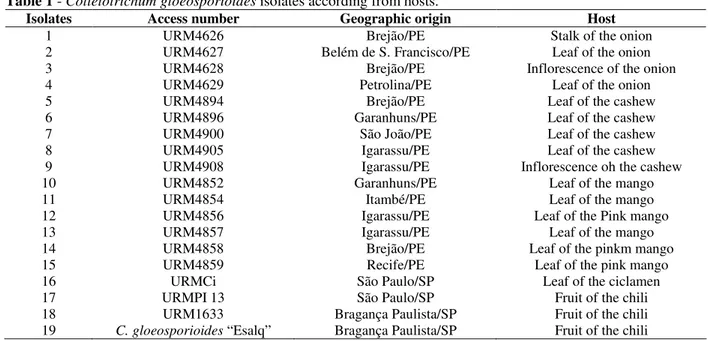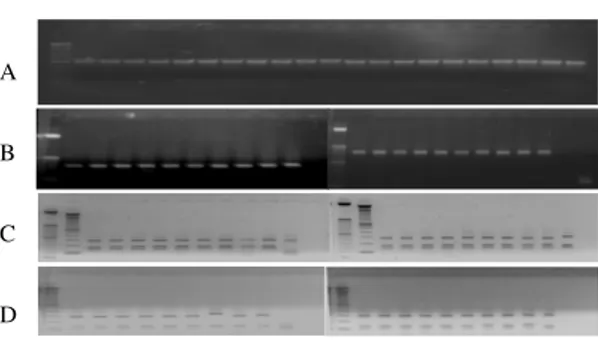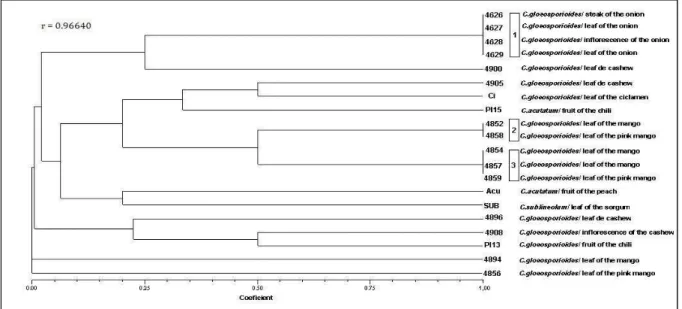Amplification of the cap20 Pathogenicity Gene and Genetic Characterization Using Different Markers Molecular in
Texto
Imagem




Documentos relacionados
Using molecular markers can get parameters on the structure and genetic diversity of populations, as well as estimate gene flow among populations (HAMRICK,
N fertilization increased the nitrate content of the soil, foliar N content and the number and weight of total and marketable
Molecular variance analysis (AMOVA) of seven populations of Moxotó breed and the Canindé outgroup, obtained with 56 RAPD markers.. are derived from country fairs without knowing
The aim of this work was to characterize Eugenia dysenterica populations in studies of genetic variability, population structure and gene flow, using RAPD markers.. Material
The purpose of this study was to evaluate the genetic diversity in 16 potato cultivars that are being made available to potato growers in Brazil, and to develop a molecular
Although still not much used in passion fruit genetic variability studies, RAPD markers have been shown to be polymorphic, allowing the characterization of the variability among
Polymorphisms - STRPs) developed to the domestic pigs for genetic characterization of pure wild boars ( Sus scrofa scrofa ) and its hybrids and determine the genetic
Building on the present day knowledge of structural differences between the host and the parasite LDH, we have isolated and cloned Theileria parva lactate dehydrogenase ( Tp

